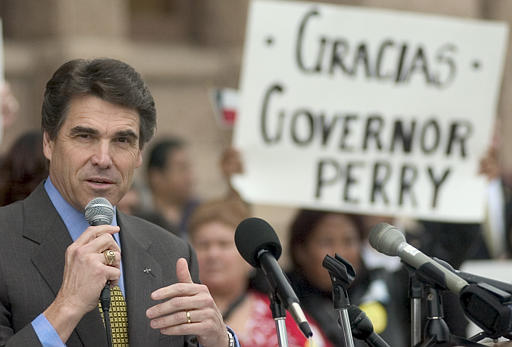The First Amendment bars the United States government from “respecting the establishment of religion.” Although this clearly forbids an established national church (and, through the due process clause of the 14th Amendment, state establishments as well), it is generally conceded that the establishment clause also prohibits laws or actions that favor one church or denomination over another, known as religion neutrality.
There is somewhat less agreement as to whether the government may favor religion over secularism or irreligion (sometimes called benevolent neutrality or accommodationism), although it seems clear that the free exercise clause guards against penalizing individuals for their religious affiliations and peaceful forms of worship.
For many years, a majority of the Supreme Court applied what was known as the three-part Lemon Test in cases involving the establishment clause. Originating in the case of Lemon v. Kurtzman (1971), the test required laws and government actions should have a secular purpose, should neither advance nor inhibit religion, and should not foster an excessive entanglement with religion.
Although this test did not include the word neutrality, it was often interpreted as requiring it. Even before the Supreme Court had articulated the Lemon Test, in Everson v. Board of Education (1947), it had observed that the state must “be a neutral in its relations with groups of religious believers and non-believers.” Similarly, in Walz v. Tax Commission (1971), the court decided that states could extend the same tax-free benefits to churches as it did to other nonprofits, without violating the establishment clause.
When the court largely abandoned the Lemon Test in Kennedy v. Bremerton School District (the case upholding a high school football coach’s right to pray on the field after a game) in 2022, it has largely relied on historical practices and understandings, although these are not always without their own ambiguities.
Laws and government actions must be neutral in regard to religion
In several decisions, beginning with Mueller v. Allen (1983), the high court looked at religion neutrality in part to determine whether certain government laws and actions were violating the establishment clause. Most of the cases centered on government aid to religious entities.
In Mueller, the Rehnquist Court considered a Minnesota law that allowed parents to claim income tax deductions for the expenditures they incurred — “tuition, textbooks and transportation” — in sending their children to secondary schools, including private religious ones.
Writing for the majority, Chief Justice William H. Rehnquist noted: “It is not at all easy . . . to apply this Court’s various decisions construing the [establishment] Clause to governmental programs of financial assistance to sectarian schools and the parents of children attending those schools.”
Construing precedent, however, Rehnquist found the Minnesota law a neutral government aid program that did not breach the church-state wall.
Court has cited neutrality in upholding grants for church schools
By the time the high court had grappled with tax benefits, such as those presented in Mueller, it had a precedent holding that not all aid to religious schools violates the First Amendment principle of church-state separation. Indeed, the decision in Mueller cited the court’s 1947 ruling in Everson v. Board of Education, which upheld a public school policy of helping parents shoulder the costs of transporting their children to private schools via the public school busing system.
Following Mueller, the Supreme Court cited neutrality in upholding government benefits to religious schools in Witters v. Washington Department of Services for the Blind (1986) and Zobrest v. Catalina Foothills School District (1993).
In Trinity Lutheran Church of Columbia, Inc. v. Comer (2017), the court ruled that church schools were equally entitled to government funds to cushion playground surfaces.
In Espinoza v. Montana Department of Revenue (2020), it ruled that parents could apply state scholarship funds both to public and parochial schools.
In Carson v. Makin (2022), that the state of Maine could not exclude families who sent their children to parochial schools from state-funded tuition in rural districts where no public schools were available.
In Catholic Charities Bureau, Inc. v. Wisconsin Labor and Industry Review Commission (2025), the court said Wisconsin could not deny a tax exemption for unemployment taxes to the Catholic charity that helped the poor on the basis that this did not meet its definition of religious purpose, which included proselytization and/or work specifically directed to church members.

Public funding of religion in America has long been a controversial, touchy subject. Government funding of private schools, such as the one portrayed in this photo, is one component of that issue. In this photo, Sister Marilyn uses good form but grimaces on missing a shot as she plays marbles with two of her first grade students at Christ the King school in Columbus, Ohio, March 19, 1969. Awaiting their turns are Linda Strapp, 7, left, and Larry Ognibene, 6. (AP Photo/Gene Herrick, used with permission from the Associated Press)
Law is more likely neutral if government funding of religion is secondary
But as the Rehnquist Court noted on numerous occasions, and did so in Mueller, the definition of neutrality depends largely on perception — that is, if the government funding scheme involving religion appears to be secondary or indirect, it has a much greater chance of being viewed as neutral and not a violation of church-state separation. In Mueller, Rehnquist claimed that it was “noteworthy that all but one of our recent cases invalidating state aid to parochial schools have involved the direct transmission of assistance from the State to the schools themselves.”
At issue in the high court’s 2002 ruling in Zelman v. Simmons-Harris was an Ohio private school voucher program. Most of the high court’s previous rulings on government funding of religion were noted in upholding Ohio’s embattled plan. But in Zelman the court expounded upon neutrality.
Citing Mueller, Rehnquist wrote: “We would be loathe to adopt a rule grounding the constitutionality of a facially neutral law on annual reports reciting the extent to which various classes of private citizens claimed benefits under the law.” In Zelman, Rehnquist also noted that its precedent made “clear that where a government aid program is neutral with respect to religion, and provides assistance directly to a broad class of citizens who, in turn, direct government aid to religious schools wholly as a result of their own genuine and independent private choice, the program is not readily subject to challenge under” the First Amendment principle of church-state separation.
Departure from 'no aid to religion' principle causes concern
In his dissent in Zelman, Justice David H. Souter, joined by Justices John Paul Stevens, Ruth Bader Ginsburg, and Stephen G. Breyer, criticized the Rehnquist majority for its gradual departure from the long-standing “basic principle of no aid to religion.”
At one time in Supreme Court precedent, Souter argued, neutrality — meaning “evenhandedness toward aid recipients” — had a “limited” but nevertheless useful purpose in the high court’s overall determination of when government support of religion violated the separation of church and state. But the majority ruling in Zelman rendered the use of neutrality in church-state jurisprudence “impossible to understand” and useless in determining when a government aid package to religion violates the separation of church and state. Instead, Souter wrote, government aid to religion, despite the Rehnquist Court’s discussion of neutrality, would remain a contentious issue:
Not all taxpaying Protestant citizens, for example, will be content to underwrite the teaching of the Roman Catholic Church condemning the death penalty. Nor will all of America’s Muslims acquiesce in paying for the endorsement of the religious Zionism taught in many religious Jewish schools, which combines “a nationalistic sentiment” in support of Israel with a “deeply religious” element. Nor will every secular taxpayer be content to support Muslim views on differential treatment of the sexes, or for that matter, to fund the espousal of a wife’s obligation of obedience to her husband, presumably taught in any schools adopting the articles of faith of the Southern Baptist Convention.

Texas Gov. Rick Perry speaks at a pro-voucher rally on the South steps of the Capitol Tuesday, April 5, 2005, in Austin, Texas. Proposals to use taxpayer money to fund private school tuition, a large portion that would go to religious schools, has been an issue in many states. (AP Photo/Thomas Terry)
Public funding of churches, religious schools controversial
Public funding of religion in America has long been a controversial, touchy subject. The nation’s fourth president, James Madison, offered an eloquent argument against a Virginia bill providing public funds for Christian institutions. In his heralded 1785 text “Memorial and Remonstrance Against Religious Assessments,”
Madison rhetorically asked his fellow citizens and Virginia lawmakers whether they could comprehend that the “same authority which can force a citizen to contribute three pence only of his property for the support any one” religion “may force him to conform” to any other religion at other times.
Judges consider neutrality involving free exercise of religion
Although most references to neutrality have occurred in cases involving the establishment clause, the concept applies at least indirectly in free exercise cases as well, where strict neutrality sometimes conflicts with the idea that this clause provides for the protection of religious natural rights (Campbell (2012).
In a number of rulings dealing with state regulations designed to curb the spread of COVID-19, the court indicated that it could not treat church gatherings differently from other gatherings in secular settings. In Tandon v. Newsom (2021), for example, the court struck down a regulation limiting home prayer meetings to three families or fewer on the basis that such laws “are not neutral and generally applicable, and therefore trigger strict scrutiny [the court’s highest level of review] under the Free Exercise Clause, whenever they treat any comparable secular activity more favorably than religious exercise.”
In Sherbert v. Verner (1963), the Supreme Court held that the government needed to apply strict scrutiny to laws that were neutral on their face but that imposed burdens on people with certain religious beliefs. In this case, the court decided that a state had erred when it refused to extend unemployment benefits to a Seventh-day Adventist who had turned down jobs that would have required her to work on Saturdays, contrary to her faith.
The court modified this decision in Employment Division, Department of Human Resources of Oregon v. Smith (1990), when it denied unemployment benefits to individuals who had lost their jobs for ingesting peyote, which was against state law, even though it was part of a sacrament by the Native American Church.
Justice Antonin Scalia applied a less demanding valid secular policy test, which it said states could apply when a law was passed in pursuit of a legitimate governmental interest and is applied neutrally. Although the Religious Freedom Restoration Act (RRA) of 1993 attempted to overturn this decision, the court ruled it unconstitutional in City of Boerne v. Flores (1997), although it later upheld the Religious Land Use and Institutionalized Persons Act of 2000 (RLUIPA), which applied to individuals who were being held in prisons or mental institutions.
Court divides 4-4 on state funding of a religious charter school
In May 2025, the Supreme Court divided 4-4 in a case about state funding of a religious charter school in Oklahoma. At issue was whether such funding furthers the free exercise clause by treating such a religious school neutrally and is thus constitutionally acceptable or whether this violates the establishment clause by providing direct governmental aid to a religious entity. By deadlocking on a decision (Justice Amy Coney Barrett did not participate), the court essentially upheld the Oklahoma Supreme's Court decision that such funding was unconstitutional [Drummond v. Oklahoma Statewide Virtual Charter School Board (Okla. Supreme Court) (2024)].
This article was written by John Vile, a political science professor at Middle Tennessee State University, Jeremy Leaming.

